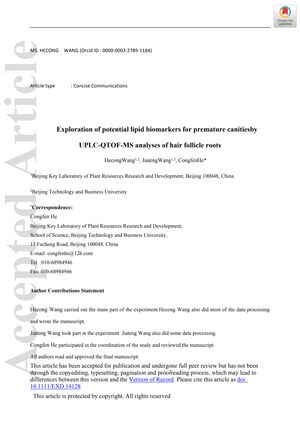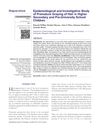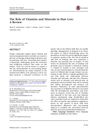Exploration of Potential Lipid Biomarkers for Premature Canities by UPLC-QTOF-MS Analyses of Hair Follicle Roots
June 2020
in “
Experimental dermatology
”

TLDR Researchers found that certain lipids, especially vitamin D3, are lower in prematurely grey hair than in pigmented hair.
In the study conducted three years ago, researchers investigated the lipid profiles of individuals with premature greying of hair, known as canities, compared to healthy volunteers. They utilized ultra-performance liquid chromatography/quadrupole time-of-flight mass spectrometry (UPLC-QTOF-MS) to detect lipids in hair follicle roots and performed multivariate data analysis to identify differences. The study identified seven main classes of lipid compounds that differed between pigmented and white hair. Notably, levels of phosphatidylethanolamine (PE), phosphatidylcholine (PC), vitamin D3 (VD3), and cholesterol were higher in pigmented hair of the control group than in white hair of individuals with premature canities. Sphingomyelin (SP), phosphatidic acid (PA), VD3, and diglyceride (DG) were found in lower levels in white hair compared to pigmented hair in individuals with canities. Vitamin D3 levels were the highest in the control group with pigmented hair, decreased with the severity of canities in pigmented hair, and were the lowest in white hair. The study concluded that vitamin D3, in particular, showed a significant decrease in white hair and could be a potential target for future research on premature canities.






